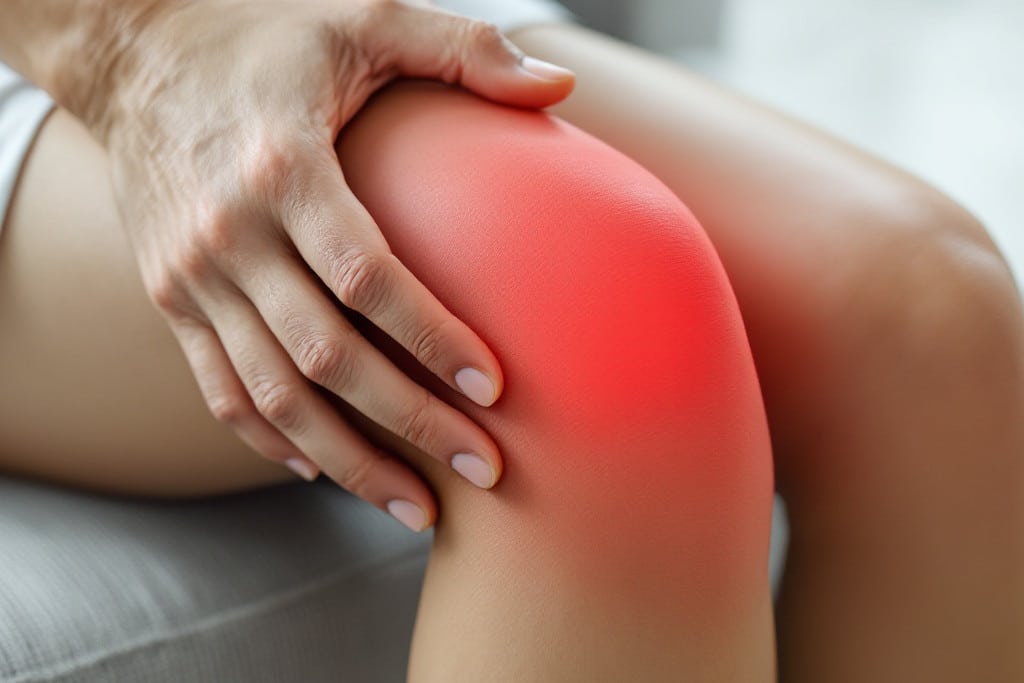
Knee osteoarthritis (OA) is a widespread and often debilitating condition causing pain, stiffness, and functional limitation in individuals worldwide. When conservative therapies fail to provide adequate relief, intra-articular injections are a common intervention to manage symptoms. Viscosupplementation, involving the injection of hyaluronic acid (HA) into the knee joint, is an established approach aimed at supplementing the depleted synovial fluid. Among the available options, Euflexxa® (1% sodium hyaluronate), manufactured by Ferring Pharmaceuticals, is a widely utilized HA viscosupplement known for its non-avian derived source and characteristic 3-injection treatment cycle for knee OA. (View our full selection of orthopedic injectables)
Euflexxa® Composition & Key Characteristics
Euflexxa® is a highly purified solution containing 1% sodium hyaluronate. Key features include:
- Non-Avian Source: A significant characteristic is that Euflexxa® is produced through bacterial fermentation. This eliminates the theoretical risk of allergic reactions in patients sensitive to avian proteins (e.g., eggs, feathers) that can be associated with HA derived from rooster combs.
- High Molecular Weight: Euflexxa® is formulated with a high molecular weight HA (typically 2.4-3.6 million Daltons), intended to mimic the viscoelastic properties of healthy synovial fluid effectively.
- Formulation: It is provided as a clear, viscous solution in a prefilled syringe, typically containing 2mL of the 1% sodium hyaluronate. It does not contain corticosteroids.
Mechanism of Action: How Euflexxa® Provides Symptomatic Relief
The primary mechanism of action for Euflexxa®, as with other HA viscosupplements, is viscosupplementation. In OA, the natural HA in synovial fluid degrades, reducing its viscosity and elasticity. Injecting exogenous HA aims to:
- Restore Lubrication: Acts as a lubricant, reducing friction between the joint surfaces.
- Improve Shock Absorption: Helps restore the cushioning properties of the synovial fluid, absorbing impact during movement.
- Restore Viscoelasticity: Aims to return the synovial fluid to a more gel-like state, improving joint mechanics.
Beyond these physical effects, some research suggests potential secondary biological actions of exogenous HA, including modest anti-inflammatory effects and support for chondrocyte (cartilage cell) function, though these mechanisms are complex and may vary between products. The core role is supplementing the depleted synovial fluid.
Clinical Applications & Patient Selection (Knee OA Indication)
Euflexxa® is specifically indicated for the treatment of pain associated with osteoarthritis (OA) of the knee. It is not typically used or indicated for other joints.
- Target Patient Profile: Suitable for patients experiencing symptomatic knee OA pain and stiffness who have not achieved adequate relief from less invasive therapies such as simple oral analgesics (like acetaminophen) and non-pharmacologic measures (like weight management, exercise, physical therapy).
- Contraindications: Practitioners must carefully review and adhere to the product guidelines for contraindications. These typically include known hypersensitivity to hyaluronan preparations. The presence of active knee joint infections or skin diseases/infections in the area of the injection site are absolute contraindications due to the severe risk of septic arthritis.
- Untested Populations: As with many medical products, there is generally a lack of extensive clinical trial data specifically in pregnant or lactating women and in children. Use in these populations is generally not recommended.
Administration Protocol: The 3-Injection Regimen
Euflexxa® is administered as a specific, multi-injection protocol:
- Dosing Schedule: The recommended protocol is one 2mL injection administered directly into the intra-articular space of the knee joint once a week for three consecutive weeks. It is crucial to complete the full three-injection series as specified in the product IFU for optimal results.
- Aseptic Technique: Strict aseptic technique is absolutely paramount for all intra-articular injections to prevent the devastating complication of septic arthritis. This involves meticulous skin preparation (e.g., using chlorhexidine or povidone-iodine solutions), establishing a sterile field, using sterile gloves, syringes, needles, and a single-use approach for each joint and injection.
- Injection Procedure: Utilize a standard intra-articular knee injection technique (e.g., superolateral, anteromedial, or mid-medial portal) to ensure accurate placement within the joint space. If significant joint effusion is present, it should generally be removed prior to injecting Euflexxa®. If treating both knees, use a separate syringe and needle for each knee. Always refer to the specific Euflexxa® IFU provided with the product for detailed injection guidelines.
Clinical Efficacy & Patient Outcomes: Reviewing Global Data
The efficacy of Euflexxa® for knee OA pain has been evaluated in clinical studies. Key findings from published trials and real-world use generally demonstrate statistically significant pain relief and functional improvement compared to placebo or control groups in appropriately selected patients. Patient satisfaction rates are also often reported positively. The duration of relief is typically cited as being up to 6 months following the completion of the three-injection series, although individual patient response and the longevity of benefit are variable.
It is important to manage patient expectations; viscosupplementation provides symptomatic relief and may help improve function, but it does not reverse the underlying degenerative process of osteoarthritis. It can potentially delay the need for more invasive procedures in some patients.
Safety Profile & Potential Side Effects
Euflexxa® is generally well-tolerated. Adverse events are typically local and temporary:
- Common Adverse Events: The most frequently reported side effects in clinical trials and practice include transient arthralgia (joint pain), back pain, limb pain, joint swelling or effusion, and injection site reactions (pain, swelling, redness, bruising). These are often mild to moderate and resolve spontaneously within a few days.
- Serious Risks (CRITICAL):
- Septic Arthritis: Though rare, infection within the joint space is the most severe potential complication of any intra-articular injection. It is a medical emergency requiring immediate diagnosis (joint fluid aspiration and analysis) and aggressive treatment. Strict aseptic technique is the most crucial preventative measure.
- Hypersensitivity/Allergic Reactions: While the non-avian source of Euflexxa® reduces the risk of reactions related to avian proteins, allergic reactions to hyaluronan preparations can still occur, though severe systemic reactions are rare.
- Acute inflammatory reactions (Pseudo-sepsis): A rare, non-infectious inflammatory reaction that mimics septic arthritis but with sterile joint fluid.
Practitioners must be prepared to recognize and manage potential side effects and complications promptly. Always consult the full product Instructions For Use relevant to your region for comprehensive safety information.
Sourcing Authentic Euflexxa®
Ensuring the authenticity, sterility, and quality of Euflexxa® is paramount for patient safety and treatment efficacy. Always purchase genuine Euflexxa® from authorized distributors or reputable licensed suppliers. Be vigilant against counterfeit or improperly stored medical injectables, as they pose significant risks. Health Supplies Plus is committed to providing authentic viscosupplement products like Euflexxa® sourced reliably for licensed medical professionals.
Conclusion: Euflexxa® as a Non-Avian, 3-Injection Option for Knee OA
Euflexxa® (1% sodium hyaluronate) offers practitioners a non-avian derived option for viscosupplementation in the management of pain associated with knee osteoarthritis. Administered as a specific three-injection weekly regimen, it aims to provide symptomatic relief by restoring lubrication and shock absorption properties to the synovial fluid, supported by clinical data.
Successful, safe, and effective use relies critically on appropriate patient selection, strict adherence to the specific 3-injection protocol, meticulous aseptic technique, accurate intra-articular injection, awareness of potential risks, and sourcing authentic product according to local regulations. When used appropriately, Euflexxa® is a valuable tool in the multimodal approach to managing knee OA symptoms.

About the Author: Doris Dickson is a specialist writer for Health Supplies Plus, focusing on the aesthetic medicine industry. She diligently researches cosmetic treatments and products to provide clear, concise information relevant to licensed medical professionals. Her work supports Health Supplies Plus’s commitment to being a reliable informational resource and trusted supplier for the aesthetic community.
Disclaimer: The content provided in this article is intended for informational purposes only and is directed towards licensed medical professionals. It is not intended to be a substitute for professional medical advice, diagnosis, or treatment, nor does it constitute an endorsement of any specific product or technique. Practitioners must rely on their own professional judgment, clinical experience, and knowledge of patient needs, and should always consult the full product prescribing information and relevant clinical guidelines before use. Health Supplies Plus does not provide medical advice.
